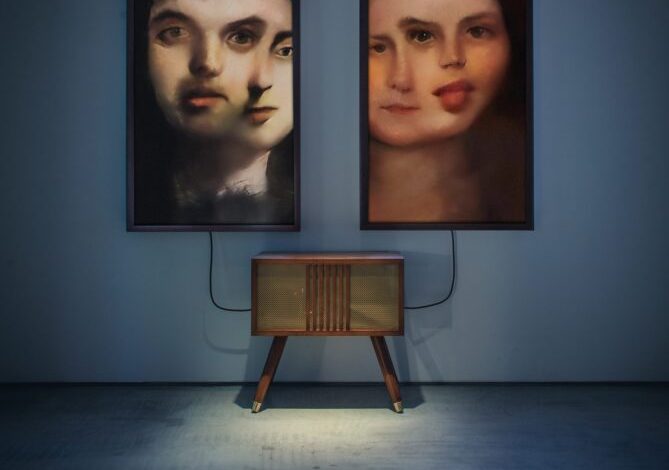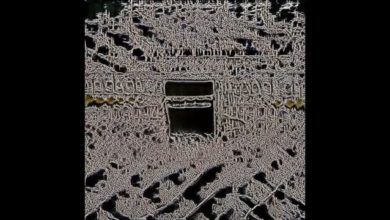When Artificial Intelligence Meets Art

Artificial intelligence in art is a form of computational creativity for developing software which reflects human beings’ creative traits. It has advanced considerably since 2014 following the development of generative adversarial networks (GANs) by Ian Goodfellow. The introduction of machine learning algorithms led to the development of better images for display. A timeline documenting AI art and how the artistic journey has advanced and evolved can be found at AIArtist.org.
Academic research has shown that human brain simulation technology provides an opportunity for artwork to be improved and to become dynamic. Human beings are now positioned on the edge of a fresh frontier which can twist their ways of perceiving and creating art. AI is changing the dynamic nature of the creative processes. Artists believe that they must develop better and more reproductive relationships with computers in order to boost their creativity levels. Rather than perceiving machines as mere tools for assisting human creators, artists now consider AI to be a creative entity in its own right. AI acts as a creative collaborator as opposed to a mere passive tool.
Machine learning involves the use of AI to make machines learn a task from previous experience or supervision and without specific programming. The introduction of machine-learning algorithms has led to the development of better images for display. There is a form of machine learning which is able to operate on vast amounts of big data called deep learning. This can learn how to extract meaningful information from high-dimensional data and it enables a machine to learn from data using different algorithms to build a model for further analysis.
This human/computer interaction is provoking many questions: How does machine learning sustain an artist’s expression? How can the public interact with AI as an artwork? How can an artist be inspired by a recent phenomenon to create an original and contemporary artwork? How can art and medicine interact be perceived as creative behaviour? How can interdisciplinary artwork interpret human phenomena?

Generative art is a process of algorithmically generating new ideas, forms, shapes, colours or patterns. Philip Galanter’s (2003) view of generative art applies to any artistic practices in which the artist uses a system, such as a set of a computer program, the machine, natural language rules, or other procedural inventions, which is put into continuous motion with some degree of autonomy resulting in a completed work of art. Thomas Nail (2019) called this motion ‘pedesis’; it is autonomous and self-transported: the motion of the foot to walk, to run, to leap, to dance unpredictably. The movement makes new materialist aesthetics. In the age of the mobile image, we are forced to rethink the image itself as something fundamentally kinetic.
This dynamic is a topic of debate among artists and critics. One type of generative art is when the artwork is the generative system. The other type is when the artwork’s form is a fixed artefact, and the generative system is left behind in the studio. Generative art created by deep-learning systems is mostly of the first type, but real-time dynamic generative art is also possible given adequate computational power. AI-based, deep-learning generative art clearly enters into such discussions: ‘Must generative art change over time while being exhibited to an audience?’
Galanter argued that generative art is not a subset of computer art but turns on the use of autonomous systems and the artist ceding control to those systems, but Memo Akten, a Turkish artist working in AI, prefers to be called a generative artist not an AI artist. He generally tries to avoid using the term ‘AI’ unless he is specifically referring to academic resources. He said (2018: 12) that AI has no sense of self and is very open to misinterpretation and unnecessarily egregious disagreement over terminology This contradiction questions the artist about what to consider when making a piece, critics and historians about what typically they will address in their analysis, and insightful audience members about what they will ponder. These are problems which usually offer multiple opportunities and possibilities.
Academic research has shown that artists are now positioned on the edge of a fresh frontier which can twist their ways of perceiving and creating art. Artists are developing better and more reproductive relationships with computers to boost their creativity levels. Several artists and scientists have put their minds together to explore multiple computer algorithms for creating art. Using algorithms to create art is commonly regarded as Generative Art which changes the dynamic nature of the creative processes and increases machines’ creativity and overall intelligence.
Several artists and scientists have put their minds together to explore multiple computer algorithms for creating art and increasing machines’ creativity and overall intelligence. Alongside these developments, several critics have questioned whether introducing machinery into art is truly a way of introducing competition or enhancing human creativity. According to Dr Ahmed Elgammal, the core founder and manager of the Art and Artificial Intelligence Laboratory at Rutgers, today’s world has dynamically constrained human imagination and creativity. Machines are therefore essential for and competent in assessing and exploring these dynamic possibilities. Without an adequate opportunity for invention, creativity remains highly elusive. So anyone using AI can advance his/her artistic work and expand creative ideas.


Arthur Miller (2019) argued that most experts in artificial general intelligence (AGI) agree that by the end of this century a jump to artificial superintelligence will have been made. This could result in consciousness, emotions, inspiration, love and anger being developed artificially. The first attempt to create art in this way was made by Harold Cohen (1928-2016), a British artist who developed the AARON programme which generated multiple artistic images which Cohen had not fed into it. There is a growing use of genetic and other generative systems in the design of artistic, practical and decorative objects. Alongside these developments, several critics have questioned whether introducing machinery into art is truly a way of introducing competition or enhancing human creativity.

Ahmed Eljammal, an Egyptian computer scientist and artist, is the core founder and manager of the Art and Artificial Intelligence Laboratory in New York. In his first exhibition of AI art, he explored how to make a machine understand visual art in the same way that we do. He has programmed an Artificial Intelligence in Creative Adversarial Network (AICAN) to use a machine which was fed over 100,000 images of eastern art over the last 500 years. Even so, there is no Egyptian identity in the work.


Another artist is Mario Klingemann; he produced a ground-breaking piece of AI art by generating portraits of people who had never existed. He used a collection of neural networks from portraits painted by the great masters from western European art history.

Sofia Crespo, an AI artist who focuses on the way organic life uses artificial mechanisms to simulate itself, is interested in the dynamic change in the role of the artists working with machine-learning techniques. She argues that anyone using AI can advance their artistic work and expand creative ideas. But she is working in the field of natural life rather than her human life.

Memo Akten is a London-based artist who has established himself at the forefront of AI-powered art. He is doing a lot of interesting work but there is none of his Turkish background in it. Once he tried to make a collective memory of New York by generating visual associations of the Statue of Liberty and the buildings around it. But this is not his background, and he calls his work ‘data sculptures’ by arguing that data can be treated as a pigment.

Rafik Anadol is a Turkish media artist and director who lives in Los Angeles. He works in the field of site-specific public art to produce data sculptures and live audio/visual performances. His immersive installation approach explores the space between digital and physical entities by creating a hybrid relationship between architecture and media arts with machine intelligence. However, none of his work has any cultural elements.


